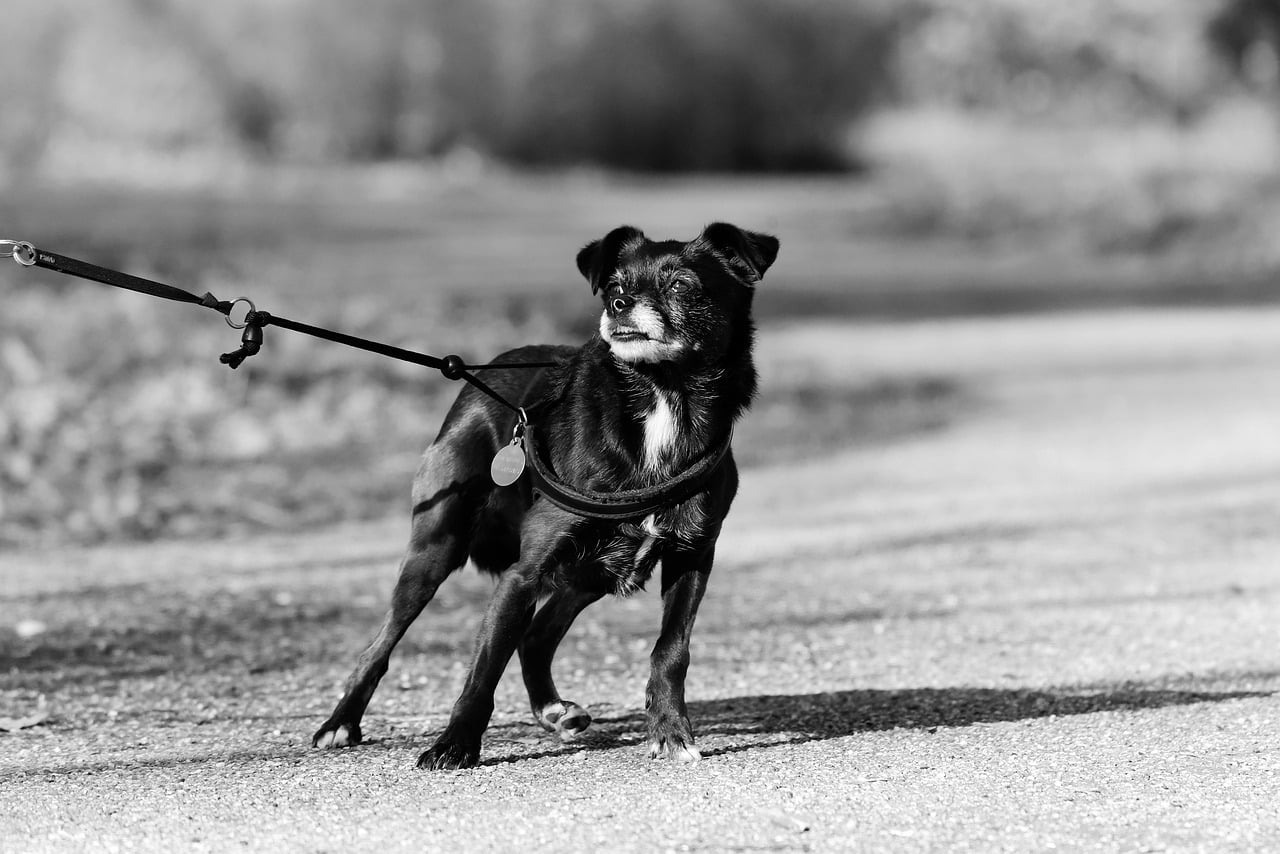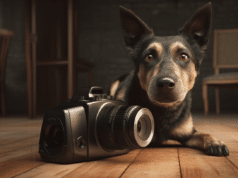

Note: Commissions may be earned from the links below.
Understanding Leash Reactivity in Dogs
Leash Reactivity in Dogs is a common problem. When on a walk, they can experience anxiety when reacting to stimuli. Barking, lunging and pulling can scare people and other dogs.
There are various causes. Past trauma, unfamiliar surroundings or lack of socialization can be some. Understanding why your dog reacts is key. Positive reinforcement, routine exercise and training can help minimize reactivity.
Note that stubborn cases may need medication and advanced training techniques, so consult with your veterinarian if needed.
Stay pawsitive! Use these techniques to leash out the reactivity in your furry friend.
Techniques to Help Your Dog Stay Calm During Leash Reactivity
This section will introduce various techniques to help your dog stay calm during leash reactivity. These include teaching your dog proper leash manners, positive reinforcement training, desensitization and counter-conditioning, reducing triggers and avoiding negative situations, and implementing a calming regimen for your dog. When implemented correctly and consistently, each of these techniques can greatly improve your dog’s behavior and help them stay calm during walks.
Teaching Your Dog Proper Leash Manners
Want your pup to walk nicely? Teaching leash etiquette is key. Here are some tips to help:
- Choose a suitable leash and collar for your pet’s size and attitude.
- Use positive reinforcement when your pup behaves – ignore any negative behavior like pulling or lunging.
- Practice in a controlled space, then move to more difficult places until leash reactivity is under control.
Remember – each dog is different, so adapt the techniques to their needs. With patience and consistent practice, you can train your pup effectively.
For better results, reward good behavior with treats, toys, or words of praise. Struggling to do it alone? Consider hiring a pro. These tips will result in better walks for both you and your pooch.
Positive Reinforcement Training
Positive reinforcement techniques involve rewarding dogs for good behavior rather than punishing them for bad behavior. This encourages dogs to learn what is expected of them and motivates them to behave well. Rewards can include treats, toys, or praise. Using positive reinforcement techniques can increase the likelihood of success and strengthen the bond between you and your pet.
Consistency and timing are very important. Give treats or verbal praise right after they do the desired behavior, so they connect it to the reward. This way, the same action will always be associated with the same reward or cue.
Start with simple commands like “sit” or “come.” Consistently reward your dog each time they follow those commands correctly. Then, gradually increase the complexity of commands as your dog improves.
For optimal results, use high-value rewards – especially in challenging situations, like when you need to pass other dogs on a leash. High-value rewards can be something your pet only gets at rare times, making it more exciting. Forget about hiring a dog trainer – desensitize yourself to your dog’s leash reactivity!
Desensitization and Counter-Conditioning
Train your pup with desensitization and counter-conditioning to reduce their leash reactivity. Start with low-stress exposures, and use treats or toys for positive reinforcement. Practice regularly for the best results. Look into underlying causes like fear or anxiety. A pro trainer or vet can help.
Fun fact: A study in Applied Animal Behaviour Science shows dogs with positive reinforcement training show less aggression toward strangers than those trained with punishment. To avoid triggers, just steer clear of that yappy Chihuahua’s owner!
Reducing Triggers and Avoiding Negative Situations
Choose times and places to exercise when it’s not busy. Don’t go to areas with lots of dogs or people. Keep your dog away from other animals, so they won’t get upset or protective. Use products like a Thundershirt, ADAPTIL collars, or Rescue Remedy to lessen their anxiety. Teach your pup commands to stay focused around distractions. Don’t yell or pull on the leash; remain calm and communicate well with them.
To prevent bad experiences, practice loose-leash walking in a calm and positive atmosphere. This will help your pup understand how to behave while on a leash and reduce the chances of arguments. Also, make sure they’re well-rested and fed before going for a walk.
Patience is key when training your pup – it’s the best way to get great results! Why bother with medication when you can just give your pup belly rubs and treats?
Implementing a Calming Regimen for Your Dog
To calm your reactive pup on a leash, employ tactics to reduce stress and encourage positivity. Here are some tips:
- Exercise: Go for frequent walks, runs or swims with your pup.
- Mental stimulation: Use toys or puzzles to keep their brain active.
- Positive reinforcement: Reward good behavior when they stay calm.
Don’t use force, such as yelling or pulling the leash. Stay alert to signs of stress and redirect their attention with treats or games.
Pro Tip: If needed, consult a professional dog trainer who can provide tailored solutions. Remember, all dogs are therapists who charge in cuddles and kisses!
Additional Tips and Strategies for Dealing with Leash Reactivity
This section offers additional tips and strategies to tackle leash reactivity in your dog that can work wonders. With the aid of sub-sections such as finding professional help, understanding your dog’s body language, using specialized equipment, maintaining consistency and patience, and knowing when to seek veterinary assistance, you can help your furry friend overcome leash reactivity in a compassionate and effective manner.
Finding Professional Help for Your Dog’s Leash Reactivity
If you need professional help with your dog’s leash reactivity, turn to an accredited canine behaviorist. Search databases and ask for recommendations from vets, trainers, and animal shelters. Do thorough research and pick someone using up-to-date positive reinforcement methods.
The selected person should conduct an evaluation to establish the cause and severity of the issue. Provide in-depth info about your dog’s background and show his behavior in different situations. This way they can come up with tailored training plans and exercises.
It can be tough for owners emotionally and mentally. So find professionals that not only understand your pup, but also the human psychology and emotions involved.
Every case is unique, so be patient and stay committed throughout the process.
A Word of Warning: A family had a reactive dog showing aggressive behavior. They contacted an unqualified trainer who used shock collars, which caused extreme anxiety in the dog. The family then found a knowledgeable behaviorist who helped them heal the trauma by using humane methods like desensitization techniques.
Understanding Your Dog’s Body Language and Stress Signals During Walks
While out for a walk, pay attention to your dog’s non-verbal cues and signs of stress. Head low, tail down, ears flat, panting, yawning, avoiding eye contact – these can all signal stress. By being aware of these signs, you can stop reactive behavior before it starts.
Check the environment for potential triggers. Loud noises, other dogs, etc. Desensitization techniques can help your pup feel more comfortable in these situations. Reward good behavior and avoid punishment.
Pro Tip: Talk to a professional trainer if leash reactivity is severe or doesn’t improve. And, lastly, a valid reason to buy more doggy gear – specialized equipment to tackle leash reactivity!
Using Specialized Equipment for Leash Reactivity
To ease Leash Reactivity, special equipment can help. This aids with learning and also offers a safe atmosphere. Here are six strategies for using specialized equipment for Leash Reactivity:
- Head Halters
- No-Pull Harnesses
- Muzzles
- Front-Clip Harnesses
- Back-Clip Harnesses
- Bite Suits/Gate Design/Agility Obstacles/Target Sticks etc.
Different items of equipment can be used for various skill levels and understanding. It’s very important to pick strategies that lower anxiety instead of raising it. The accurate usage of specialized equipment often gives successful outcomes.
Another way to manage leash reactivity is to take regular breaks while walking. Gradually increase the distance between you and your dog. Use treats and toys as distractions, and work at a comfortable speed.
Training a dog needs consistency, patience, and treats. Just like raising a child, but with more fur!
Maintaining Consistency and Patience Throughout Your Dog’s Training
Maintaining consistency and patience is key to curbing leash reactivity in dogs. Inconsistency and impatience can ruin all the hard work done so far. Positive reinforcement techniques can help, like treats for good behavior, praising them when they stay calm, or redirecting their attention when they react aggressively.
Consistency is key. Be accurate with commands, use firm but not harsh corrections, and give frequent praise. Professionals suggest daily walks at the same time and place to promote calmness. Patience is important; never give up!
Continuously evaluate progress as dogs have different learning capabilities. Tracking improvement helps identify what works and what doesn’t. Dogs need our patience and tolerance even if they don’t meet expectations. Going through training steps consistently over time ensures success.
An owner whose dog had severe issues resorted to an extreme measure: tethering the dog on a 250-foot leash and closely monitoring him until he became receptive to recall commands. Eventually, the trust between the two grew, leading to greater freedom and resolving leash reactivity issues. If your dog’s behavior is out of control, it’s time to seek professional help.
Knowing When to Seek Veterinary Assistance for Behavioral Issues
Veterinary assistance may be required if pets display behavioral issues. Consulting with a veterinary professional can assist in recognizing the issues and offering effective remedies. This will ensure positive outcomes for your pets.
It is important to act quickly if behavioral symptoms persist. It’s better to modify bad behaviors rather than punishing them. Minor adjustments at home or work could produce remarkable results in handling socialization issues, over-excitability, and anxiety attacks.
The American Veterinary Medical Association (AVMA) recommends that behavior management begins with a vet’s examination to rule out any medical conditions triggering unwanted animal behaviors. Regular check-ins with vets may reduce the risk of severe reactions.
Frequently Asked Questions
Q: What is leash reactivity?
A: Leash reactivity in dogs refers to the behaviour where they become overly excited, aggressive or anxious when they are on a leash. This is typically seen when encounters with other dogs, people or animals occur.
Q: What causes leash reactivity?
A: Leash reactivity may be caused by a number of factors, including fear, lack of socialization, genetics, previous negative experiences and a desire to protect their owner.
Q: How can I help my dog stay calm when on a leash?
A: There are several techniques that can help your dog stay calm when on a leash. These include using positive reinforcement training, desensitization and counter-conditioning, body language awareness, and avoiding stressful environments.
Q: What is positive reinforcement training?
A: Positive reinforcement training is a method of training where positive reinforcement such as treats, praise or play is used to encourage good behaviour. This type of training can be particularly effective in helping dogs to overcome leash reactivity.
Q: What is desensitization and counter-conditioning?
A: Desensitisation and counter-conditioning is a technique used to help dogs become less reactive to triggers that cause anxiety or fear. This technique involves gradually exposing the dog to the trigger in a controlled and positive environment and providing treats and praise to help them associate the trigger with positive experiences.
Q: How long does it take to help my dog overcome leash reactivity?
A: Every dog is different, and the time it takes to help them overcome leash reactivity can vary depending on the severity of their reactivity and the techniques used. With commitment and consistency, many dogs can see improvement in just a few weeks, while others may take several months to overcome their reactivity.



